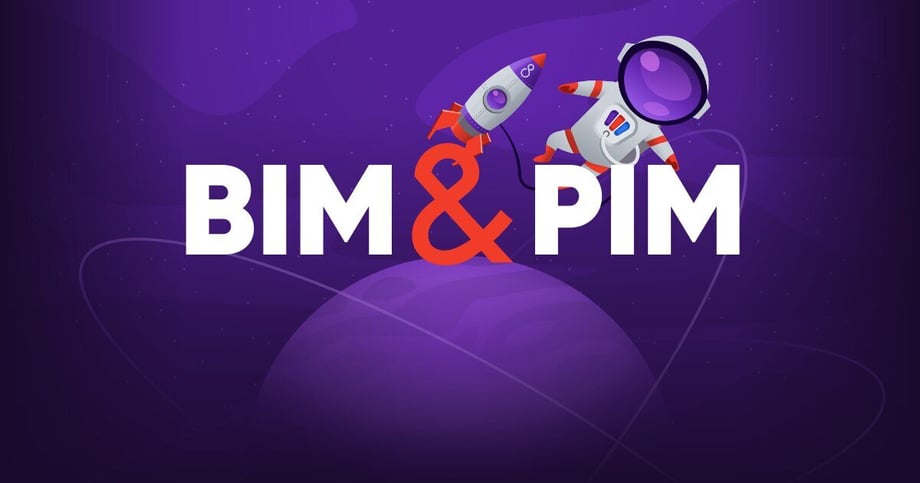
The construction industry is lagging in terms of digitalization. The study 'Digitalization Index shows this for Medium-Sized Businesses', which Deutsche Telekom has had carried out for the fourth time (2019). Even today, the exchange of data is still mostly analog, with drawings on paper. This type of information exchange is extremely susceptible to errors and misinterpretations, causing significant financial damage. One solution to this problem is BIM.
What is BIM?
Building Information Modeling is a standardized, digital process for the networked planning, execution, and management of buildings and structures. For this purpose, all relevant building data is digitally captured, modeled, combined, and made available in an open database for all participants. (Wikipedia)
The story
The development of BIM began in the 1970s. However, it only became an established term at the beginning of the 2000s. It was decisively shaped and driven forward by the company Autodesk. Initially, it was used to describe the process of "three-dimensional, object-oriented, AEC-specific computer-aided design".
The Challenge
Today, BIM's vision is to create a uniform model of a newly planned building, including all the trades and building elements, which means products. This requires that these products are documented uniformly and made available to a central place. Since many providers in this sector haven't recorded their data yet or not in a structured way, there is still a long way to go.
PIM as a basis
To enable the implementation of BIM, it is necessary to name and classify products clearly and uniformly based on their attributes. Only in this way a heterogeneous data landscape can be created. In recent years, a product information management (PIM) system has proven to be the ideal basis for this. In this system, all required data is collected, consolidated, enriched, classified, and made available for extraction and transfer to central locations. Through defined data standards, such as ETIM, eCl@ss, or IFC, it is possible to createan always up-to-date database. It can be used by all participating suppliers, private individuals, and service providers.
The open-source software Pimcore can be a possibility for suppliers to set the course for BIM and goal-oriented successfully. Because in addition to the PIM functions, Pimcore can also score points in the further process steps that characterize BIM. For example, in the ordering process - which should also be able to be initiated from BIM. Here Pimcore shines with its API-driven approach and the eCommerce framework. In the area of "Predictive Maintenance," a new product or the appropriate spare part can be ordered directly.
The advantages
- Improved data quality due to the common database and constant synchronization
- More efficient workflows, as long communication channels and sequential work steps are simplified
- Immediate and continuous availability of all current and relevant data
- Improved exchange of information between those involved in planning
- Exclusion of error sources, such as misinterpretation and misunderstandings
- Continuous data preparation during the entire life cycle of a building
The BMVI pushes BIM
In politics, intelligent data exchange has already arrived. With the 'Stufenplan Digitales Planen und Bauen', the Federal Ministry of Transport and Digital Infrastructure has committed all new infrastructure-related building construction projects to use the technology from 2020.
VDMA
The German Engineering Federation (VDMA), too, has recognized the importance and potential of BIM and is dealing with this topic in many very different forums. For example, in the German Association for Automation and Management in Houses and Buildings (AMG), the German Association for General Air Technology, or the German Association for Valves.
Since 2005, the VDMA has been a full member of eCl@ss e.V. and during this process founded the working group "BIM and Building Automation". This has set itself the goal of developing and contributing relevant papers in cooperation with eCl@ss e.V.
A look into the future
Of course, there are also critical voices. Dieter Diener, Managing Director of the Baden-Württemberg construction industry, said in 2017 in an interview with VDI Verlag: "Building Information Modeling (BIM) is certainly not the holy grail of the construction industry". "There is, of course, a digitalization process, at the end of which many people will certainly see BIM as well. But I see it as a slow, evolutionary process rather than a revolution "
Nevertheless, those who already deal with product data management and BIM today will enjoy a great advantage in the market in the future. Many companies have already recognized this and are investing in the development of interconnected systems.
With the help of the Classification Store from Pimcore, Intera has already successfully implemented extensive classifications for some companies, such as JÄGER DIREKT - Jäger Fischer GmbH & Co KG or Human Biochemica und Diagnostica GmbH.

.jpg?width=520&height=294&name=poca-crew(1).jpg)

